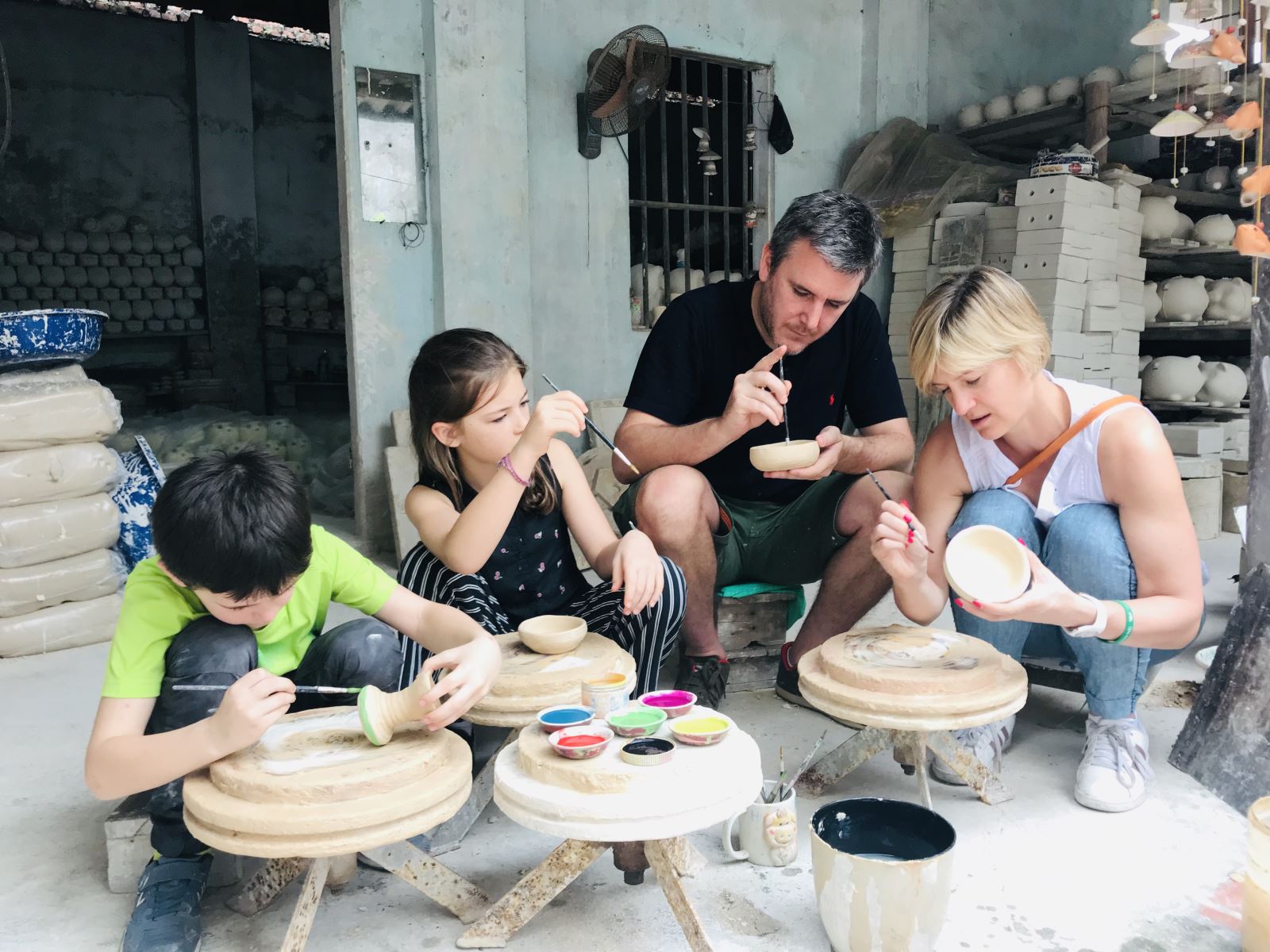Overview:
Referring to the long-standing traditional craft village in Vietnam, the name Bat Trang Pottery Village cannot be ignored. Bat Trang Pottery Village is not only a place to preserve the traditional culture of Hanoi, but also one of the largest suppliers of ceramics in Vietnam. Through many ups and downs of time, Bat Trang Pottery Village today is a very attractive tourist destination nearby, attracting many people who want to learn about the ceramic industry, as well as buy home excellent ceramic products.
History:
According to Dai Viet historical book and Nguyen Trai’s history, Bat Trang pottery village was formed during the Ly dynasty, located on the left bank of the Red River, now in Gia Lam district, Hanoi. After more than 500 years of existence and development, Bat Trang Pottery Village today has become a center for professional-scale ceramic production, with many large and large companies established in addition to small household production units family. However, the village still retains the precious traditional culture and artistic value placed on each product.
Pattern:
In addition to items serving the spiritual life and worship of the Vietnamese people, the pottery kilns in Bat Trang also make consumer products, decorate and display them with more modern designs, designs, and materials. Bat Trang ceramic products are now present everywhere in Vietnam market, and are also exported to many countries in Europe and Asia.
The most interesting thing when coming is to see the artisans perform a very sophisticated and meticulous ceramic making process. In addition, you can also experience making your favorite ceramic products
Location:
Bat Trang pottery village is located in Bat Trang commune, including Giang Cao village and Bat Trang village, in Gia Lam district, Hanoi city.
According to historical records, when the Ly Dynasty moved the capital from Hoa Lu to Thang Long, the Bat Trang people migrated with them. When approaching the capital, seeing the fertile alluvial land along the Red River, they decided to settle there and together create pottery.
After many times of changing administrative boundaries, in 1964, Bat Trang commune was officially established, Bat Trang Pottery Village began to be more stable and developed
How to get there?
Bat Trang Pottery Village is only about 10km from Hanoi city center, so you can come here by or by public car.
Bus is the most convenient and least expensive public transport to go to Bat Trang with the route as follows:
- Board bus 34 My Dinh – Gia Lam route, and get off at stop Tran Nhat Duat.
- Continue to take bus 01 or 02 to get to Long Bien transit station.
- Take bus 47 to go to Bat Trang. The car will stop at the village gate.
If you go by car or motorbike:
- From Cau Giay district, you should choose the direction to go through Long Bien bridge or Chuong Duong bridge because this route has many cool trees. After crossing the bridge, turn right and continue along the Red River dike road to reach the gate of Bat Trang village.
Tours:








































